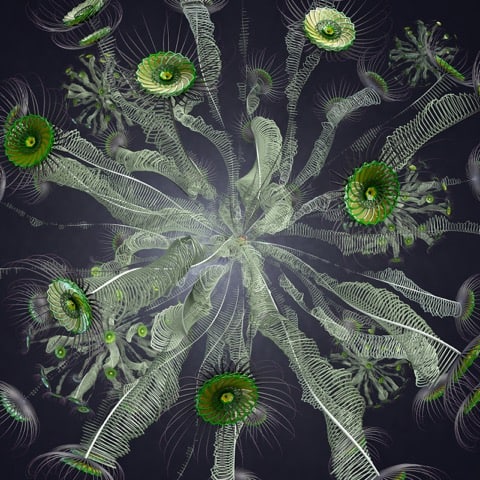The evolution of Creative Coding
In this post, Jon McCormack one of the lead educators from Monash University’s course Creative Coding, discusses how the course has continued to evolve in response to changes in the world of creative programming.
In this post, Jon McCormack one of the lead educators from Monash University’s course Creative Coding, discusses how the course has continued to evolve in response to changes in the world of creative programming.

What’s new in Creative Coding?
With a new run of our Creative Coding course starting in August, the creative coding team have been busy updating several aspects of our course materials. Since the initial run of the course in 2014 a number of other online courses in creative coding have emerged. There is now even a platform devoted exclusively to online creative coding courses highlighting the increasing popularity and diversity of creative programming.
To keep up with this evolving landscape we’ve made many updates to the course: the Processing software we use in the course has undergone a major revision, now at version 3. We’ve updated all the code examples and support materials to ensure they work correctly with the most recent version. Processing has become the de-facto standard for creatives who want to learn to code due to its friendly interface, ease-of-use and great support network – both online and in the many books available. We’ve also updated both practical and philosophical aspects of the course, including discussion on the new wave of deep learning in music and art; something that now even Google is working on.
How has Processing evolved?
Processing began using the Java programming language more than a decade ago, but since that time other programming languages have risen in popularity, most notably Python and Javascript. Processing now supports using these languages too, but keeps the same basic coding methodology and interface. While we still focus on the Java version for Creative Coding, almost all the code examples will run under Javascript using p5.js. The big advantage of using Javascript is that all your software will run within any modern web browser, making it much easier to share and distribute your code art.

How is our course different?
What has always differentiated our course from many other creative programming courses is the exploration of the nuanced inter-relationship between coding and artistic and creative practice. Significant parts of the course cover both historical and contemporary creative practice and these practices are situated within broader cultural and technological contexts. A good example of this is the section of the course on chance and randomness. Here we first introduce concepts of randomness and chance from a cultural and creative perspective before discussing its role in art and then, lastly, in code. This provides an important context for articulating why you might want to use randomness in a creative coding project before covering how you do it.
One of the inspiring things about running an online course is seeing the quality and creativity that learners are able to express and share as they work through the course. The Creative Coding Flickr group for example has over 5,500 generative images and videos that people doing previous versions of the course have posted. We’ve also added curated weekly galleries that will highlight the most interesting work of learners as they progress through the course.
Whether you want to learn the basics of programming creatively, or would like to understand and explore your own creative practice in code, we hope the course will provide you with some stimulating challenges and a diverse global cohort of fellow learners.




